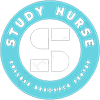Part 1: Email Purpose
The tone of formatting an email is ensuring that the message elicits a professional relationship with the audience. The recommendation report requires a formal tone, which entails a thorough and direct message with full words to make the email objective. The format involves breaking paragraphs into shorter lines for the reader to avoid huge blocks of content. Bullet points and sub-topics are also appropriate to clarify points.
The audience varies depending on the formal or informal nature of an email. For the recommendation, the audience is professional and includes the nurse manager. The high-value audience reinforces the need for a thorough and objective message, mainly focused on the recommendation.
When crafting an email, it is crucial to adopt a plan that will enhance the quality of the message. For this reason, it is crucial to establish the target audience to understand the right language throughout the content. The other step is choosing the right subject lines, by ensuring that it is clear and brief for the audience. Further, planning entails familiarizing with the tone to ensure that the communication is mutually beneficial. Therefore, it is important to understand the audience well and communicate in ways that align with their needs and expectations.
For the audience in an email, it is vital to use titles such as Ms. or Mr., or the specific department targeted. In official scenarios, it is also appropriate to use “To Whom It May Concern”.
If it is many groups or categories of audiences in an email, an author can address each person directly for as many as four people. When addressing a designated team such as the nursing team, addressing them as a group in the greetings section is appropriate. The appropriate length of an email is between 50 and 125 words.
Part 2: Email Recommendation
| From:
To: Nurse Manager CC: All nursing staff Subject: Adopting Telehealth to Improve Quality of Care |
| Dear Nurse Manager,
I am writing you concerning the recent calls for a technological change in the nursing department. One technology that makes the organization more responsive to patients’ needs and expectations is telehealth. The technology allows healthcare professionals to use audio and video communication platforms to streamline virtual consultations, remote patient monitoring, patient education, and interdisciplinary collaboration within and outside the facility. Telehealth offers multiple opportunities for the nurses to be part of well-coordinated and collaborative practices, improve patient education, and reduce the cost of care for patients, families, and health care providers. Despite challenges associated with privacy and data breaches, high cost of implementation, and multiple regulatory requirements, telehealth provides opportunities to improve the quality and safety of patient care. Adopting telehealth will enable the organization, patients, and families to benefit through reduced risk of readmissions, few emergency care visits, and timely diagnosis and treatment. I look forward to furthering interactions on telehealth, benefits, risks, and implications on quality outcomes.
Best regards,
Registered Nurse |



